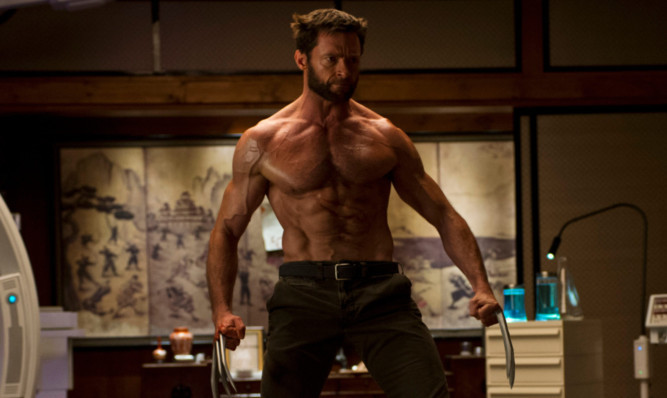
Australian star returns as The Wolverine for another big-budget adventure.
Hugh Jackman is a mild-mannered man.
But since his first appearance in X-Men in 2000, he has made the part of the brooding, rage-prone Wolverine his own, succinctly able to convey the fury that lies within the character with one scowl of his thick, dark eyebrows.
So it’s surprising that the Australian star says this finely-honed ability to express his internal anger is all down to having older brothers.
“My eldest brother, Ralph, drove me nuts when I was young,” recalls Hugh, who’s in the UK to launch the latest instalment of the franchise, The Wolverine.
“I remember how angry I was at times,” the 44-year-old confesses, “but, because he was stronger that me, I used to take it out on the sports field. I used to play a lot of rugby and I would get in trouble a lot.
“And then you kind of grow up and become civilised. But when you get a role like this, you realise, ‘It’s all still there’.”
After the first Wolverine spin-off, in 2009, grossed £60 million on its opening weekend in America alone, a sequel was always likely.
But just by growing his sideburns and sharpening his claws in preparation for the movie meant Hugh was assured of making movie history.
The Wolverine is the sixth time the Oscar winner has donned the persona of Logan the most a single actor has ever played a comic book hero (he will return for a seventh time in next year’s X-Men: Days Of Future Past too).
But Hugh has no intention of resting on his laurels and expecting audiences to turn up just because they have previously.
“I go deeper, angrier, heavier, more berserk in every way,” he assures us.
“You will see Logan more vulnerable, more at risk, and more of a monster than you’ve ever seen him before.
“He’s struggling with identity, he’s struggling with his reason to exist, and now he faces the choice of whether to embrace his true nature or not.
“I’ve always loved playing this character, and many doors have opened for me as a result.
“But I have always had this thing of ‘I wish I had gone a little bit further physically with him’. I’ve always wanted people to look at the screen and go, ‘Whoa’.”
The most iconic member of the X-Men universe, Wolverine first emerged in 1974, when the character made an appearance in the very last panel of an issue of The Incredible Hulk one that foreshadowed his joining the band of mutant heroes known as The X-Men.
With his adamantium claws, his powers of self-healing and his primal “berserker” rages, Wolverine certainly stood out when he made his first appearance in Marvel Comics back in 1972.
But it was a four-issue series, published in the mid-1980s that took the character to Japan for the first time and introduced his catchphrase: “I’m the best there is at what I do, but what I do best isn’t very nice.”
It’s in this story of crime, betrayal and honour, in which Wolverine confronts his own mortality for the first time.
It’s also the basis for this £66 million big-screen version of The Wolverine.
Hugh insists he was delighted with both the literal and metaphorical journey the character takes.
“Japan is like nowhere else on the planet,” he observes. “And the atmosphere of Japan seeps through the movie.
“It’s a fairly insular society with a very strong sense of its own culture and history, so Logan is really a stranger in this strange new world.”
Born in Sydney to English emigrants Chris Jackman and Grace Watson, Hugh is the youngest of five children (he also has a younger half sister). His mother left the family and moved back to Britain when Hugh was eight, and he remained Down Under with his accountant father.
Growing up in Australia, he says he never considered movie acting as a possible career path and instead studied at university to become a journalist.
“At school they encouraged music and sport and acting and drama,” he confides, “but it was encouraged as part of the rounding of the man. Not really as a career option you were meant to become a doctor or a lawyer, one of the professions.
“So I never contemplated becoming an actor. I studied communications at the University of Technology in Sydney but I didn’t know how to get started in journalism and didn’t fancy knocking on the doors of bereaved families and all that kind of stuff for the first few years.
“As a result, I put it off for a year and did a part-time acting course. Then a lot of things fell into place at once.”
It’s a tough job that journalism, Hugh. You’d best stick to being a movie star.

Enjoy the convenience of having The Sunday Post delivered as a digital ePaper straight to your smartphone, tablet or computer.
Subscribe for only £5.49 a month and enjoy all the benefits of the printed paper as a digital replica.
Subscribe